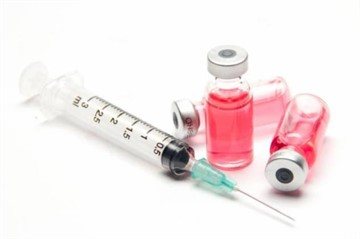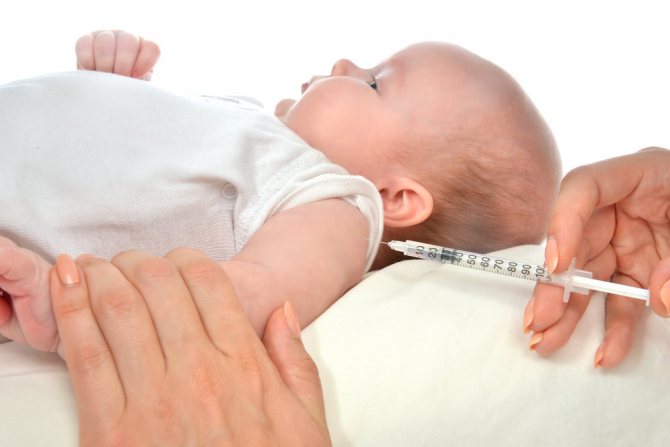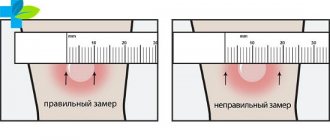It is no secret that modern parents are divided into two camps in relation to vaccinations. Some sincerely believe in the benefits of vaccination and consider it to be salvation from most dangerous infectious diseases known to mankind, while others are convinced that the introduction of vaccine preparations over time turns into a real disaster and can provoke the development of very sad consequences in the child’s body.
Mass refusals of routine vaccinations have recently become a fairly common phenomenon, which is observed in most countries of the post-Soviet space.
This trend is associated with the emergence of free access to information about complications of vaccination. Many parents are frightened by the sad statistics of the development of post-vaccination pathologies, so they are increasingly looking for ways to avoid the procedure. Are vaccines really that dangerous for humanity? Is the belief that vaccination is harmful a myth?
What diseases are vaccinated against?
There are many vaccines available in modern medicine.
Some types of vaccines are considered mandatory and are included in the vaccination calendar, others are given during epidemiological outbreaks.
BCG
This first and most important vaccine is given in the maternity hospital. It protects the newborn from infection with tuberculosis.
Due to the anatomical features of the respiratory system of babies, any respiratory diseases are extremely dangerous for them. This is why it is so important to protect the child from the first days of life.
Hepatitis B
The next routine vaccination is against hepatitis B. This is one of the most serious diseases, which is subject to long-term treatment with a low percentage of favorable outcomes. You can encounter it everywhere, even in a regular dental office.
Tetanus
The causative agent of this disease is found in the soil, in dog feces, and on rusty metals. Enters the body through the blood. The child often falls, gets scratches, abrasions, so there is a high chance that during the next fall the tetanus bacteria will still enter the body.
With the bloodstream, the microbe enters the nervous system, causing severe convulsions. The most dangerous is a spasm of the respiratory muscles, which leads to suffocation and death. During attacks, due to strong extension of the spine, you can get multiple injuries with subsequent disability. There is no cure for the disease, and the number of survivors is extremely small; as a rule, they are profoundly disabled.
Doctor's advice
There are cases when vaccination of children causes complications; this cannot be predicted. However, a negative reaction can occur to any drug or food product, detergent, or even new clothes due to dye. Every day, thousands of people turn to doctors with allergic manifestations of varying severity, even coma due to various reasons. Terrible diseases can only be prevented by administering a vaccine; each parent who has written a waiver of this procedure bears responsibility for the health of the child.
Victoria Druzhikina Neurologist, Therapist
Whooping cough
An extremely serious disease characterized by spasmodic paroxysmal coughing up to respiratory arrest. The older a person is, the easier he tolerates this infection.
In adults, whooping cough is most often completely asymptomatic, but for infants this disease is very dangerous. A child may simply suffocate during coughing attacks.
Diphtheria
It is accompanied by severe intoxication of the body and inflammation of the organs of the respiratory system with the formation of a filmy coating on them, which blocks the airways and leads to suffocation.
This is especially significant for infants, who have such small lumen sizes in the upper respiratory tract that any formation can cause serious harm to health.
It is almost impossible to remove these films due to their dense fusion with tissues. The slightest attempts to tear off plaque lead to severe pain and the formation of bleeding wounds on the mucous membrane.
Polio
Multiple lesions of the gray matter of the brain with the subsequent development of paresis and paralysis of those parts of the body that innervate the affected area of the nervous system.
Measles
It is dangerous not so much because of the disorders caused by the virus as because of the complications of the disease. These include croup (larynx stenosis), measles pneumonia, central nervous system lesions, and lymphadenitis.
Rubella
Dangerous complications on the reproductive system. It poses a particular threat to a pregnant woman who is unvaccinated and has not had rubella in childhood. Causes multiple deformities of the fetus, and in early pregnancy - miscarriage. If a pregnant woman is infected with rubella, an abortion is performed for medical reasons.
Mumps
It often causes complications in the urinary system with damage to the kidneys, affects the functioning of the pancreas, and also causes infertility.
Among the unscheduled vaccines, vaccinations are carried out against certain strains of influenza virus, meningococcal infection, adenovirus, typhoid fever, smallpox, cholera, and plague.
Pneumococcal infection
Pneumococcus is the most common cause of community-acquired pneumonia at any age. In children under three years of age, pneumonia is especially dangerous due to the structure of the respiratory tract and can be fatal. This vaccination forms the development of immunity against pneumococcus, i.e. when encountering a real pathogen, the body will have the means to fight it and pneumonia will not develop. Included in the list of mandatory requirements in 36 countries, incl. – in the USA and Europe. In the Russian Federation, it was included in the National Vaccination Calendar (the main guideline for vaccination of the population of all ages) in 2014. Before this, it was carried out at the request of the parents. The vaccinations are called “Prevenar”, “Pneumo 23”, “Pneumovax 23”.
They differ in manufacturer, cost and age from which use is permitted. "Prevenar" is used in children from 2 months, because promotes the development of immunity against 7 subspecies of pneumococcus, the rest - from 2 years, after their administration, immunity to 23 types of microorganisms is formed.
The safest vaccines

Today, the safest are considered to be inactivated and killed vaccines, which do not contain weakened but live pathogens of infectious diseases.
It is these solutions that are characterized by low reactogenicity and quite rarely lead to the development of post-vaccination complications.
For example, the risk of post-vaccination polio after administration of inactivated polio vaccine is zero, compared with cases of oral live vaccine, when the disease is diagnosed with a frequency of 1:40,000.
Side effects
The following side effects are possible after vaccination:
- Increased body temperature.
- Allergic reactions.
- Swelling, swelling, redness at the injection site.
- Violation of general condition: loss of appetite, moodiness, drowsiness, etc.
- Manifestations similar to the diseases for which the vaccine was given (for example, the appearance of a rash with rubella vaccination).
- Convulsions without fever.
Side effects that do not worsen the child’s condition and do not pose a threat to his life and health are considered an acceptable reaction to vaccination, because the body must respond to the introduction of foreign agents. Such manifestations require only symptomatic therapy (Paracetamol at temperatures above 38 degrees, a compress with magnesium if there is pain and swelling in the injection area). All reactions should be reported to your doctor. Allergies are the main thing that can serve as a medical barrier to vaccinations.
Victoria Druzhikina
Neurologist, Therapist

Features of vaccination of children of the first years of life and older
In the Russian Federation, children receive two types of childhood vaccinations:
- mandatory - included in Regional and National vaccination schemes for children;
- desirable - carried out in the presence of certain indications (in case of travel, personal wishes of parents, complications of the epidemiological situation).
The standard vaccination regimen involves the administration of drugs at a certain stage of child development:
- newborns are given the first dose against viral hepatitis type B in the first 12–24 hours;
- in the first 3–7 days of the baby’s life, a tuberculosis vaccination (BCG or BCG-M) is performed;
- at 1 month a second vaccination against hepatitis is carried out;
- at 3 months, a dose of polio is administered, the first complex DPT vaccine against diphtheria, whooping cough and tetanus (for some indications it is replaced by a lighter version without the pertussis component of DPT);
- at 4.5 months a second dose of DPT is administered;
- at 6 months, a third vaccination against polio, whooping cough, diphtheria, tetanus and a third vaccination against hepatitis B are indicated;
- at 1 year of age, children are vaccinated against measles, mumps and rubella;
- at 1.5 years, the first DPT revaccination is necessary;
- at 1.8 years - second revaccination against polio
- at 6 years of age, revaccination against measles, rubella, and mumps is carried out;
- at 7 years of age, revaccination with BCG and a second revaccination with DTP;
- At the age of 14, a third revaccination against diphtheria, tetanus and polio is performed.
Additionally, the vaccination plan may include vaccinations against meningococcal, rotavirus, Haemophilus influenzae and pneumococcal infections, chickenpox, influenza, tick-borne encephalitis and human papillomavirus.
It is not always possible to strictly adhere to the schedule due to infectious or somatic diseases. In such cases, the optimal solution would be to contact an immunologist, who will examine the child and draw up an individual vaccination schedule for children with medical exemptions.
Causes of possible complications
Parents are often afraid that vaccination may harm their baby. Of course, there are cases of complications after vaccination, but they are extremely rare. They are often provoked by non-compliance with a number of rules.
Vaccination rules:
- Only completely healthy children are allowed to be vaccinated.
- Before vaccination, the baby must pass a series of tests and receive clearance from the local pediatrician, having previously undergone an examination.
- After vaccination, the child must stay on the clinic premises for an hour.
- For 5 days, the baby should not have contact with other children due to an artificial decrease in immunity
- The day after vaccination, you need to see your pediatrician for a second examination.
- New complementary foods should not be introduced to the child for 2 weeks after vaccination.
Even if the above rules are followed, sometimes complications arise in the child after vaccination.
Causes of complications:
- Expired vaccine date.
- Improper storage and transportation.
- Inadequate examination by a doctor.
- Violations of the rules of asepsis and antisepsis when performing injections.
- Individual intolerance to vaccine components.
A child's health depends on many factors. Some of them are beyond the control of medicine. But there are also those that can be influenced. Vaccination helps protect a child from terrible diseases and their consequences. Parents should decide whether or not to vaccinate, understanding that they are responsible for the health of their child.
Watch Dr. Komarovsky’s opinion on whether children should be vaccinated in the video:
This article has been verified by a current qualified physician, Victoria Druzhikina, and can be considered a reliable source of information for site users.
Bibliography
1. https://base.garant.ru/70647158/53f89421bbdaf741eb2d1ecc4ddb4c33/
Rate how useful this article was
4.3 3 people voted, average rating 4.3
Did you like the article? Save it to your wall so you don’t lose it!
Common myths about the dangers of immunization
Modern immunologists deny the harm of vaccination and insist on mass vaccination of all children, which, in their opinion, will make it possible to eradicate a number of dangerous infections around the globe.
Experts include the most common myths about the dangers of immunization:
- the myth that vaccinations cause complications in every second vaccinated child (the frequency of consequences of immunization is 1 case per several thousand children);
- the myth about the detrimental effect of the hepatitis B vaccine on the liver (in fact, the vaccine is not capable of causing a violation of the structure or functionality of the organ, but, on the contrary, protects it from the penetration of viral agents);
- the myth about the connection between vaccines and the development of autism (there is no scientific evidence to support this belief of many);
- the myth that natural immunity is better than vaccinated immune protection (both types of immune response provide long-term and effective protection of the child’s body from infectious diseases).
Myth #1: mRNA vaccines change human DNA Fact Check DW: Not true
Many people are confused by the similarity between the words DNA and mRNA and the fact that both macromolecules relate to genetic information. However, they are not the same thing. Let's take a brief excursion into genetics: DNA - deoxyribonucleic acid - is one of the three main macromolecules (the other two are RNA and proteins), which is responsible for storing and transmitting from generation to generation the genetic program for the development of living organisms and stores biological information in the form of a genetic code consisting from building blocks - nucleotides. The second major macromolecule, RNA, ribonucleic acid, also plays an important role in the coding, reading, and regulation of genes. In addition, RNA is responsible for programming the synthesis of proteins in living organisms, thereby being responsible for the actual implementation of the “building plans” of DNA.
The genetic material of some viruses, including the SARS-CoV-2 virus, is also represented by ribonucleic acid, and viruses use this to reproduce in the cells of living organisms. But the human body recognizes the invader by the spike protein and creates T cells (T lymphocytes) and antibodies that destroy the virus.

Human DNA in the cell nucleus is reliably protected
The goal of vaccination is to trigger an immune response to the pathogen without requiring the entire SARS-CoV-2 virus to enter the body. Therefore, an mRNA vaccine “delivers” only a small fragment of it into the body: a synthetically developed part of the mRNA - a building “instruction” for the synthesis of the spike protein, “packaged” in a lipid nanoparticle, which serves as a “delivery vehicle” into the cell. Once there, the genetic machinery follows the “instructions” to produce a viral protein, which is then released onto the cell surface and stimulates the immune system to mount a response to the pathogen.
But the coronavirus RNA does not have access to the cell nucleus, so it cannot reach and mix with our genome. After the body produces antibodies, the cell degrades the pathogen's used RNA.
However, in December 2021, scientists from the Massachusetts Institute of Technology found that in the event of coronavirus infection, fragments of the SARS-CoV-2 genome can be included in the human genome using the reverse transcriptase gene. This enzyme converts RNA into DNA - and the DNA, in turn, has access to the cell nucleus. A non-peer-reviewed preprint of the study was published on the bioRxiv portal and caused heated discussion in the scientific community.
David Baltimore, a virologist and Nobel laureate who won a prize for his discovery of the reverse transcriptase gene, told Science magazine that the work “raises a lot of interesting questions.” However, he emphasized that the study only showed that fragments of SARS-CoV-2 can be integrated into the cell nucleus, but do not form infectious material. “It’s probably a biological dead end,” Baltimore said.
Waldemar Kolanus, director of the LIMES Institute for Basic Biomedical Research at the University of Bonn, noted in an interview with DW that the mechanism established in the study has nothing to do with the mechanism of vaccination. According to him, the structure of the synthetic mRNA of the virus, which is part of the vaccine, was changed in order to prevent its immediate destruction by cells. “It is probably impossible to transform this process in the opposite direction. In this regard, mRNA vaccines are much safer than the actual viral genome,” he explains.











